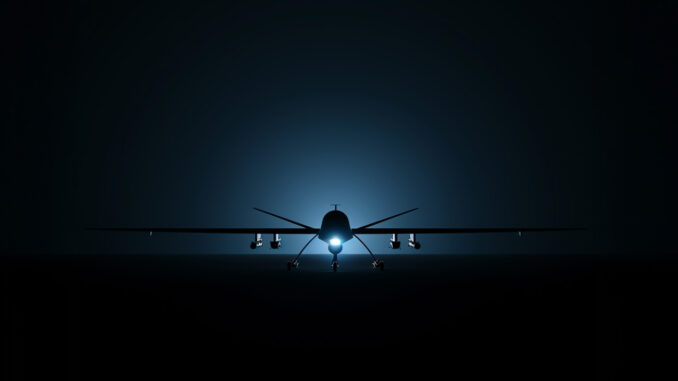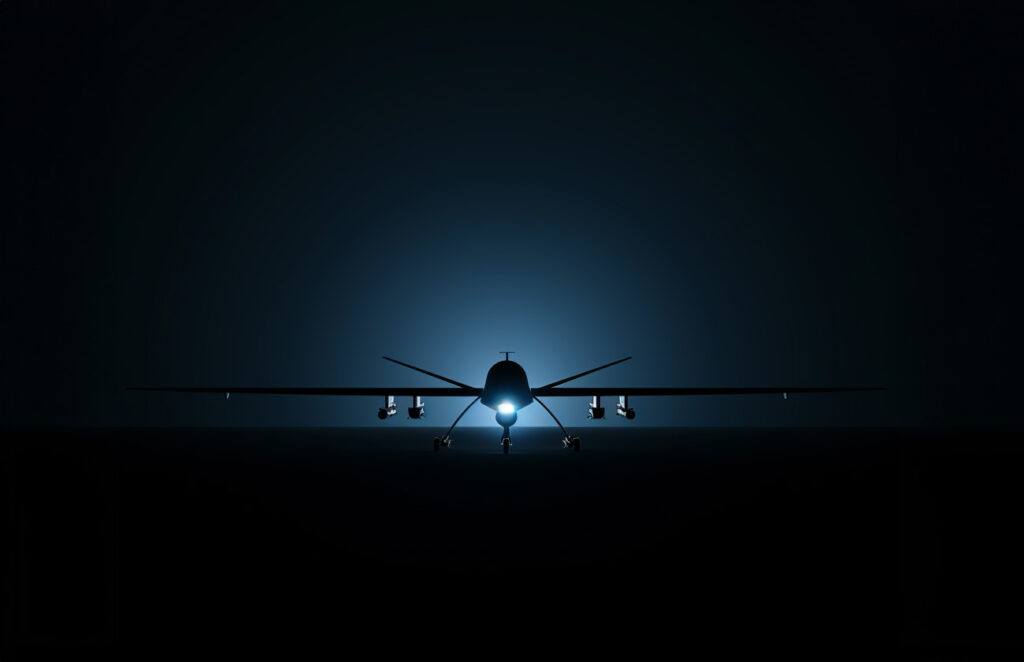
The MQ-9B Seaguardian drone lands for the first time at Kanoya air base, strengthening aerial surveillance in Japan in the face of growing naval activities by China and Russia.
In brief
General Atomics’ MQ-9B Seaguardian UAV recently landed at Kanoya Air Base in Japan, marking an important step in increasing Japan’s aerial surveillance capabilities. Faced with increasing naval activity from China and Russia, Japan and the United States are stepping up surveillance in the East China Sea. Although Japan has not yet purchased the drone, extensive trials are underway to assess its effectiveness. The SeaGuardian, capable of extended surveillance missions, is a response to regional security challenges.
Landing of the MQ-9B Seaguardian at the Kanoya base
The MQ-9B Seaguardian, a UAV developed by General Atomics Aeronautical Systems Inc (GA-ASI), recently landed for the first time at Kanoya Air Base in Japan’s Kagoshima Prefecture. This event marks a significant step forward in Japan’s efforts to strengthen its aerial surveillance in the East China Sea, a strategic region due to the increasing naval activities of China and Russia.
The drone covered a distance of around 2,000 kilometres from Hachinohe air base, demonstrating its ability to carry out long-distance flights. The MQ-9B Seaguardian is equipped with sophisticated radars, optical and electronic sensors and advanced communications systems, making it a powerful tool for maritime surveillance. Its ability to fly for 24 to 40 hours without interruption, depending on the payload, enables it to cover a vast surveillance area, making this UAV particularly well suited to Japan’s surveillance needs.
Background and reasons for increased surveillance
The landing of the MQ-9B Seaguardian at Kanoya comes against a backdrop of rising geopolitical tensions in the region. China and Russia have stepped up their naval activities, forcing Japan to strengthen its surveillance and intelligence capabilities. In February 2024, Japanese Defence Minister Minoru Kinara announced a test campaign for the MQ-9B Seaguardian, scheduled to run from July to September 2024, aimed at testing its surveillance capabilities in the East China Sea.
The trials are part of a wider strategy to evaluate the possibility of using drones to replace the human-piloted patrol aircraft traditionally used for surveillance missions. UAVs such as the MQ-9B Seaguardian offer a number of advantages, including longer endurance and the ability to cover large areas more effectively.
The trials currently underway are crucial in determining whether the MQ-9B can take on the surveillance tasks currently performed by patrol aircraft. If the results are positive, this could lead to Japan purchasing these drones, strengthening its ability to monitor naval activities in the region and respond quickly to potential threats.
Advantages and disadvantages of using surveillance drones
The use of surveillance drones such as the MQ-9B Seaguardian has several notable advantages. Firstly, these drones can fly for extended periods, providing continuous surveillance and reducing the need for frequent rotations, unlike manned aircraft, which require rest periods for crews. In addition, drones are equipped with advanced sensors that can collect data in real time, providing a detailed and accurate view of the situation on the ground.
Drones can also operate in difficult conditions and hostile environments without risking the lives of pilots, which is a major advantage in areas of potential conflict or high voltage. In addition, the use of drones reduces long-term operational costs, as they require less maintenance and human resources than manned aircraft.
However, there are also drawbacks to the use of surveillance drones. One of the main challenges is the reliance on technology and secure communications. Drones require reliable data links to operate effectively, and any disruption to these links can compromise the mission. In addition, drones are vulnerable to cyber-attacks and electronic interference, which can affect their performance and the security of the data collected.
In addition, integrating drones into military operations requires substantial initial investment in terms of training, infrastructure and maintenance. It is also crucial to develop clear protocols and regulations for the use of drones in civil and military airspace to ensure their safe and effective use.

Consequences of the intensification of aerial surveillance
The intensification of aerial surveillance in Japan, notably with the introduction of the MQ-9B Seaguardian, has significant consequences for regional security and international relations. On the one hand, it enhances Japan’s ability to monitor and respond to naval activities by China and Russia, improving its defence posture and its ability to protect its national interests.
On the other hand, this increase in surveillance could exacerbate tensions with China and Russia, who could perceive these actions as provocations or measures of defiance. For example, recent incidents have shown that Chinese and Russian ships and aircraft are increasing their presence near Japanese territorial waters, which could lead to potential confrontations if the two sides do not manage these interactions carefully.
The increased use of drones for surveillance could also influence military dynamics in the region. Japan’s neighbours could be encouraged to strengthen their own surveillance and defence capabilities, leading to a technological arms race. It could also prompt countries in the region to form strategic alliances and partnerships to balance forces and maintain regional stability.
Finally, on a national level, the integration of surveillance drones into military operations could lead to debates on the ethical and legal implications of their use. Issues of privacy, excessive surveillance and the management of data collected by these drones will need to be addressed to ensure responsible and transparent use of this technology.
Future prospects and technological development
In the future, the use of surveillance drones such as the MQ-9B Seaguardian is likely to continue to grow, not only in Japan but also in other countries facing similar security challenges. Technological advances in artificial intelligence, sensors and communications will enable drones to become even more autonomous and effective, expanding their role in military and surveillance operations.
For example, future drones could be equipped with advanced detection capabilities, enabling them to spot and track targets with greater precision. They could also be integrated into wider surveillance networks, combining data from multiple sources to provide a comprehensive, real-time picture of activity in a given area.
The development of robust cyber security technologies will also be essential to protect drones from cyber threats and ensure the security of the information collected. In addition, international collaboration in drone research and development could lead to shared innovations and common standards, facilitating the integration of these technologies into multinational operations.
The landing of the MQ-9B Seaguardian at the Kanoya base represents an important step in strengthening Japan’s aerial surveillance capabilities. This move, while motivated by regional security concerns, also paves the way for technological and strategic developments that will have a lasting impact on regional security and stability.
War Wings Daily is an independant magazine.